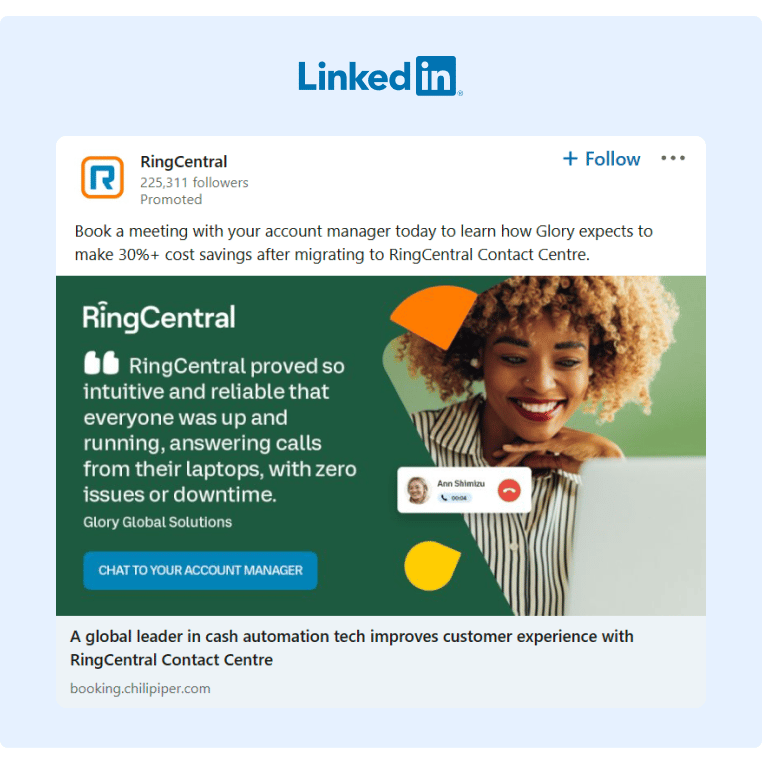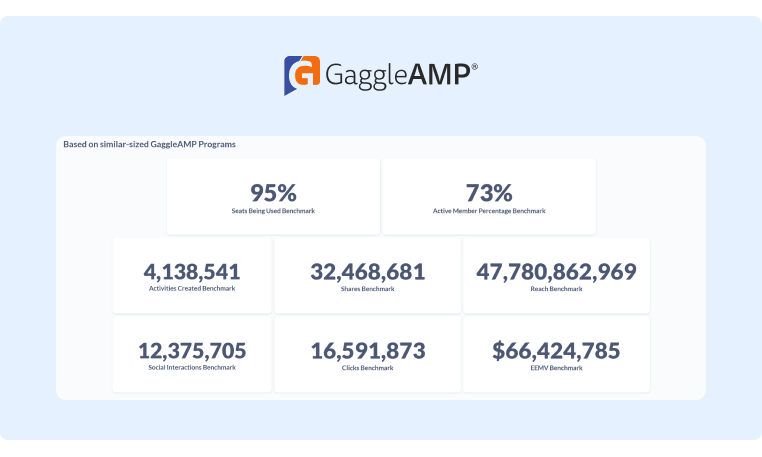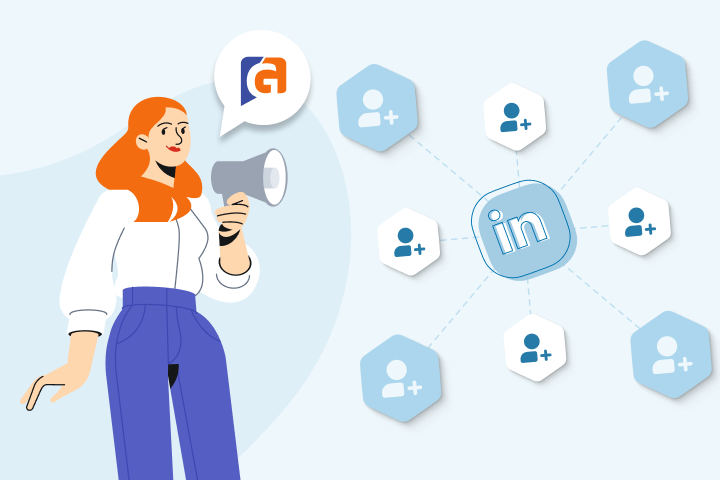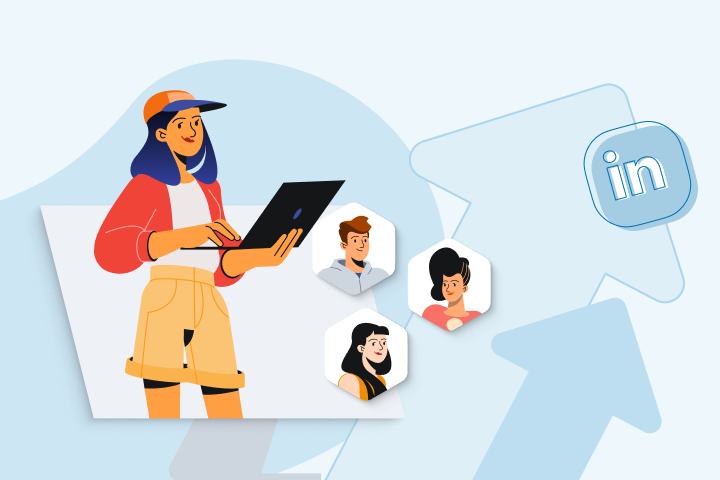What Is Earned Media Value and How Do You Calculate It?
Many conversions can be directly attributed to brand mentions from third parties, yet the data in your analytics dashboard probably won't reflect this.
For example, let's say someone saw your brand mentioned in an article on Forbes and then told their friend about it, who later searched your brand name and then converted. In this case, you can't trace the initial interaction with the Forbes article that eventually led to the conversion.
However, some signs suggest the Forbes article played a role in increasing general conversions. First, there was an increase in brand queries, and second, the Forbes article clearly earned traffic.
While you can't directly attribute a particular impression to a conversion, measuring the general correlation patterns between engagement and conversions is often the best way to estimate the value of earned media.
In this post, we'll discuss measuring earned media value (EMV) and how you can use it to better estimate the return on investment (ROI) of earned media marketing efforts.
What Is Earned Media Value (EMV)?
Earned media value is a metric that quantifies the value of engagement your brand receives from third parties.
To break this down, "earned media" refers to an organic mention of your brand in content published by a third party. The mention is considered "earned" because you didn't pay that third party for the brand mention.
A few examples of earned media include:
- Free media coverage from journalists or bloggers.
- Leveraging your case study as a subject matter expert in their blog.
- Long-term, strategic SEO efforts.
- User-generated content for free social promotion.
- Customers sharing a contest or promotion with their network that mentions your brand.
- Word-of-mouth recommendations.
- Reviews and testimonials on your product or service.
As you can see, earned media is an organic (unpaid) brand mention published on a third-party site (a site not owned by your company).
So, how do you measure the monetary value of, say, a journalist mentioning your brand in their article?
This is where estimated earned media value comes in. It's a calculation that estimates the value of the engagement generated from earned media.
How To Calculate Earned Media Value
Estimated earned media value helps you gauge the ROI of a brand mention from a third-party website. This metric helps you compare the value of those third-party brand mentions to your owned and paid media value, what you might have paid for similar brand engagement, and it allows you to put a number on it. You already do this with your paid media efforts, and that's why it's important to know how to calculate earned media value.
Calculating EMV can be easy. One of the most widely used calculations is:
EMV = Impressions x CPM x {variable}
For example, impressions refer to how many users were reached (impressions, reach, etc.) or actions taken (likes, comments, shares, etc.). CPM is often calculated by vertical or baseline benchmarks.
The variable is subjective. One of the most common calculations multiplies the impression and CPM by another factor, depending on the use case. This can confuse marketers as EMV can, and may, be calculated differently by your company or even within different departments.
Here at GaggleAMP, our calculation is based on the engagement multiplied by the going industry value for that platform, so:
GaggleAMP EMV = Engagement x Platform Cost Per Click
The industry benchmarks we base the platform click cost on are:
- LinkedIn - $3.00 per engagement.
- X (formerly Twitter) - $0.50 per engagement.
- Facebook - $0.50 per engagement.
Keep in mind that social engagement is usually considered the single most important metric, which is why we calculate based on engagement. This is because it serves as proof that a campaign is being seen by an audience.
Engagement Metrics
Engagement metrics focus on how well earned content performed with a target audience.
Content that reaches a smaller, highly-engaged audience may arguably be more beneficial than a large, less-engaged audience. This is why engagement is a stronger, more informative equivalent to the reach metric as it is quantifiable.
When engagement levels are strong, you'll see a boost in brand awareness, which often indirectly influences lead generation and sales. This is often why engagement is a key metric when assessing the performance of an influencer campaign. It matches a clear number to a quantifiable marketing metric, which can help us determine the ROI of earned media.
Sentiment
Monitor and measure the sentiment of earned media whenever possible, as it has a direct impact on your marketing strategy and brand's reputation, which can (and does) affect your sales.
When you use the traditional EMV formula, a piece of content with strong reach is usually seen as a positive.
But, what if that piece of content is a detractor?
Elon Musk, CEO of Tesla, has made various controversial remarks over the years that often lead to public outrage.
For example, he made inappropriate remarks after requiring employees to return to the office.
These remarks certainly received a lot of press, though it was negative press that ultimately caused many employees to resign.
Likewise, viral user-generated content with positive sentiment on social platforms can increase sales.
For example, Saltair is a great example of a brand that went viral on TikTok thanks to plenty of influencers organically praising the product. Saltair has since generated nearly 80 million views.

Source: Saltair
Brand searches for the product have also skyrocketed in Google, suggesting that sales have also increased dramatically:

Saltair is a great example of a brand that benefitted from reach with positive sentiment, though Tesla is an example of a brand negatively impacted by the press with negative sentiment.
This is a key reason why it's important to also consider the sentiment of impressions when estimating the value of earned media.
Share of Voice
While earned media value helps you assess those talking about your brand, it doesn't account for how others talk about your competitors' brands. This is where share of voice can help. Share of voice provides insight into your brand's popularity in comparison to your competitors' brands.
For example, the TikTok body lotion we discussed earlier, Saltair, clearly earned plenty of positive media value from the viral videos.
However, a quick Google search for "best body lotion" reveals that none of the articles include Saltair.
Therefore, even though Saltair generated plenty of positive brand searches, it still has a limited share of voice in the broader body lotion market.
Share of voice can directly correlate with market share, meaning it's a mature metric that helps determine the true impact of all marketing efforts, not just a few stronger-performing engagements.
What Are the Benefits of Earned Media Value?
By its very definition, the best benefit of earned media is that it's organic as these brand mentions are not paid or compensated.
However, earned media isn't just valuable because it's free. In fact, it's arguably more valuable than most owned and paid media campaigns.
Below, we'll discuss the main benefits of earned media.
Increase Trust and Credibility
Most customers take brand messages with a grain of salt and instead turn to unbiased third parties like social media platforms, review sites like G2 and Capterra, and even Yelp and Nextdoor (for local businesses).
About 93% of consumers have made buying decisions based on online reviews, and about 55% of consumers will read at least four reviews before making a purchase decision.
As a result, earned media is arguably even more critical to conversions than the media produced by your brand.
In fact, statistics show that 92% of consumers trust earned media more than paid media, and about half of all consumers trust third-party review sites more than reviews on retail websites.
Even though many stakeholders, executives, and even marketers view engagement as a vanity metric, brand impressions from third-party sites are often the most influential brand interactions during the customer journey.
Audience Feedback and Research
Another benefit of earned media is that it gives your brand raw and honest feedback on how the market perceives your brand. This feedback can help you identify areas to improve your product or service and double down on what your audience likes about your brand.
For example, the feedback in the review below is very valuable for the brand as they can see specific things that they can improve within the tool and how the audience uses it to solve pain points:

Source: G2
You can also use social listening platforms to better understand what people say about your brand and identify improvement opportunities.
Here's a great example of a helpful brand mention that provides audience research insights:

Source: X
Exponentially Increase Brand Awareness
When a third party chooses to promote your brand or branded content, they introduce an entirely new audience to your brand.
That new audience may also share your brand content, which can exponentially increase brand awareness.
So, instead of just receiving engagement from your existing audience, you get to reach a new audience.
This graphic is an excellent representation of how earned media is so impactful:
Source: Neal Cabage
As you can see, this single share has a ripple effect that helps it reach a significantly broader audience.
Repurposing Opportunities
Content production is expensive, and a key benefit of earned media is that it's essentially free content that you can then repurpose for your content strategy.
For example, if a customer leaves a review, you can repurpose it as a paid retargeting ad.
Here's a great example of a repurposed customer testimonial:

Source: RingCentral
What Are the Drawbacks of Earned Media Value?
Of course, earned media has some disadvantages, which we'll discuss below.
Not All Earned Media Is Positive
Sentiment is based on personal experience and not every customer will be perfectly happy with your product or service.
Unfortunately, reviews and press with negative sentiment can harm your business's reputation. For example, this company recently had a lot of negative press, and plenty of potential customers jumped into the comments to learn more about the experience, which wasn't great branding for the company:

While you can't force people to write favorably about your brand, consistently delivering an outstanding product or service and customer experience is the best way to ensure media sentiment is positive.
You Have Minimal Control Over the Narrative
With true earned media, you have no control over the narrative or positioning of your product or service.
For example, if someone referred to GaggleAMP as a full social media management platform, that wouldn't be entirely accurate as we're more of an employee advocacy and engagement platform.
So, even if someone means well, they may misrepresent your brand. The best way to combat this is to create outstanding content so that people can always receive information directly from the source (your brand).
It’s Difficult To Scale and Measure
Earned media is not owned media, so while it highlights your brand or company, it's still not your media. That makes earned media more difficult to scale and measure, making it more difficult to win buy-in for marketing initiatives designed to amplify earned media.
However, tools like GaggleAMP provide analytics dashboards that calculate earned media for you and even give you access to industry benchmarks.
How To Generate More (Positive) Earned Media Value
While earned media is earned organically from third parties, there are some tactics you can leverage to spur additional earned media value growth. Here are a few of the most impactful tactics you can incorporate into your marketing strategy.
Incorporate Employee Advocacy
One of the easiest ways to generate more earned media value is to simply ask your employees to share branded messages on social media.
Here's a great example of employee advocacy that generated plenty of high-quality brand impressions:

Source: Mara Calvello
Employee advocacy is one of the best strategies to improve earned media for a few different reasons:
-
It's Easy to Execute: Most methods to build earned media involve forming partnerships with third parties or elaborate PR campaigns. However, implementing an employee advocacy campaign only requires you to ask your employees to share content. (We'll discuss how to automate this process and increase employee engagement below.)
-
The Sentiment Is Likely Positive: One of the challenges with earned media is that you can't control the narrative. Fortunately, employees are incentivized to promote a positive story around your brand, so the sentiment will almost always be positive.
-
It's High Value: Personal recommendations from friends are often more impactful than mentions from brands like Forbes or Entrepreneur Magazine.
For these reasons, employee advocacy is arguably our favorite method to increase earned media impressions.
The only drawback of employee advocacy is that it can be difficult to keep employees actively engaged. Sure, they might oblige to your engagement requests for the first few weeks, but in time, you'll probably find that your requests are ignored.
It's understandable as your employees are busy, and many are probably worried they'll say something off-brand.
We experienced these challenges and built an employee advocacy tool to solve them. Today, GaggleAMP allows managers to create specific engagement activities (e.g., "comment on this LinkedIn post") and assign them to employees at scale.
We also realize that many employees quit engaging because they don't know what to say.
Therefore, GaggleAMP has an AI-Powered Paraphrase generator that allows managers to generate unique text for employees.

This way, employees can simply log into their Gaggle, approve or edit the text, and then schedule it for publishing.

Reducing the effort required for employees to engage with content makes it easier to increase participation and keep them engaged for the long term.
As a result, you'll generate more earned media and see a higher ROI for your efforts.
Run Social Media Contests
A great way to increase user-generated content is to run a social media contest and require participants to use a specific hashtag.
Even if you're paying the contest winner, you'll likely receive many additional organic shares from the contest participants' networks, and impressions from those shares count as earned media.
GoPro is exceptional at running user-generated social media content contests.
First, contestants create outstanding content using the product and the hashtag. Then, many of the contestants' friends and followers share the content. As a result, GoPro receives plenty of earned media from the contestants' friends and followers.
Here's one example of an entry in one of their latest social media contests.

Source: celine4174
As you can see, the contestant’s post generated 75,000+ likes, and many of their followers then reshared it with their friends, generating quality earned media.
The key to running a successful social media contest is to require contestants to create their own content.
Asking contestants to share company content can increase brand impressions, but their friends probably won't reshare it if it's commercial content. In contrast, user-generated content usually performs better because friends and family are more likely to support unique content created by their friends/family members than a brand.
In addition, user-generated content is naturally better optimized for social media.
For example, you can see that the content created by the GoPro user above is outstanding social media content and has generated over 75,000 likes. In contrast, if that contestant had just shared a branded message from GoPro, it wouldn't have received nearly as much organic reach.
Content Collaborations
Influencers are excellent for connecting your brand with your ideal target audience, but hiring influencers is also expensive.
An alternative method to get the same brand exposure without paying a cent is to do content collaborations with other respected brands (and even influencers!).
For example, go on an influencer's podcast or YouTube channel. This allows your brand to earn valuable organic impressions from the influencer's audience for free.
You can also repurpose the content and repost it to your social media platforms.
Here's an excellent example of a podcast repurposed as a LinkedIn clip that helped both the interviewee earn more reach from the interview's audience:

Source: Blake Burge
As you can see, it earned 200+ comments, though perhaps more importantly, it also earned 300+ reshares. Those reshares are highly valuable earned media and significantly improved the interviewee's reach.
It's also worth noting that you can collaborate with individual influencers and executives at parallel brands. For example, if you run a coaching platform, consider collaborating with a webinar platform, as coaches likely use both coaching and webinar platforms.
Create Original Data
Another great way to generate more earned media is to create original data. While most marketers hire a PR firm to promote a new data study, a truly great piece of content will pick up traction and receive additional organic shares.
The key to making original data work is creating new data that your ideal audience finds insightful and helpful.
To do this, dig for questions your target audience is actively searching for answers to and then create data that answers those questions for them.
For example, many content marketers want to know if AI content is an effective method for content creation. Therefore, a great data study might be a survey of how many businesses are using AI content, their current results using it, and the details about their workflow processes.
You could pay a PR firm to get the word out initially, but over time, the content will likely pick up additional organic shares through third parties.
Here's a great example of earned media generated from a data study. In this case, a reader saw the data produced by the company and then organically shared it with his following:

Source: John Karsant
Increase Content Output
The more quality content your brand publishes, the more shares you'll likely receive, ultimately resulting in more third party engagement.
If you don't have the bandwidth to increase content production, consider simply repurposing each piece of content to increase output.
For example, the LinkedIn clip below was repurposed from the original podcast episode:

Source: Dave Gerhardt
Why Is Earned Media Value Important in Employee Advocacy?
We already mentioned that employee advocacy is one of the best methods to improve earned media, but the earned media value metric is also useful for employee advocacy program managers. Here are a few reasons why calculating earned media value is beneficial to your employee advocacy program.
Achieve Buy-In From Executives
It's difficult to achieve buy-in from executives for any marketing initiative that doesn't have a quantifiable ROI.
Unfortunately, tracking the ROI of employee advocacy is very difficult as the valuable engagement happens on your employees' social media profiles.
Therefore, using a tool like GaggleAMP that makes it possible to track these engagement activities and calculate their ROI through earned media value is essential for winning the budget and resources to execute employee advocacy programs.
Identify the Most Valuable Engagement Campaigns
Another benefit of measuring earned media value is that it allows you to easily identify the content that resonates best with your employees' audiences.
Your employees may have a slightly different audience from the audience that follows your brand on social media, so these insights can help you identify the type of content your employees should share with their networks.
In addition, if you have a sophisticated employee advocacy analytics tool, like GaggleAMP, you can drill down to see which specific employees generate the most earned media value and ask them to share more content for future campaigns.
Track Program Growth
Finally, tracking earned media value helps you gauge the general success of your employee advocacy efforts over time. This data will help you understand how it compares to your other marketing strategy and will help you identify if it is trending in the right direction over time.
Start Tracking Earned Media Value Today
Estimated earned media value can help you better understand the value of other branding efforts that generate organic brand mentions from third parties.
The calculations above should provide some clarity on how to calculate earned media value. However, if you want more detailed analytics on estimated earned media value and other engagement metrics, consider using GaggleAMP.
It’s an employee advocacy platform that makes it easy to manage and track your employee advocacy program. You can learn more about how the product works by exploring its features or scheduling a demo.










